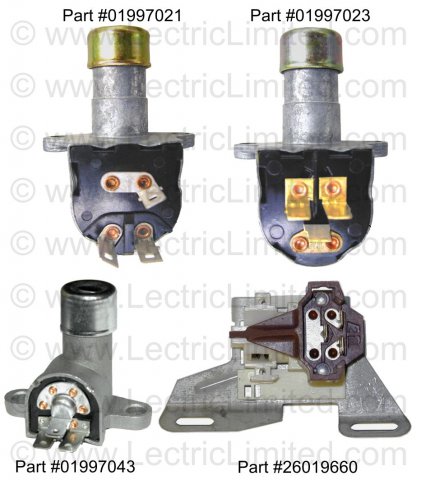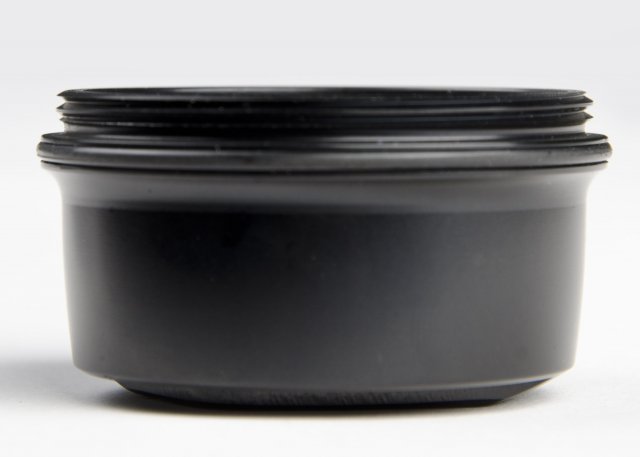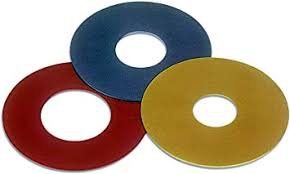-
Posts
2391 -
Joined
-
Last visited
-
Days Won
35
Content Type
Profiles
Forums
Blogs
Events
Gallery
Downloads
Store
Everything posted by Miles
-

Eibach Springs - Front sits high... *pics*
Miles replied to PCressey's topic in Brakes, Wheels, Suspension and Chassis
But the coils are collapsed and touching with the car just sitting! Can't imagine that they offer any resistance at all when the car is moving dynamically over dips and bumps or when cornering.- 48 replies
-
- suspension
- springs
-
(and 1 more)
Tagged with:
-

Eibach Springs - Front sits high... *pics*
Miles replied to PCressey's topic in Brakes, Wheels, Suspension and Chassis
As I expected the top (soft) section of progressive springs collapse as soon as the car is on the ground. The collapsed section of the springs is doing nothing. This is why I rejected those springs on my first V8 240Z built 20 years ago. I used non-progressive springs rated at 180 lb/in front and 280 lb/in rear. My car is at stock ride height and is a very comfortable daily driver. MSA should be ashamed to still be selling those progressive springs. You can find springs for you car, but it will take some homework on your part. Note: stiffer springs can be shorter than stock springs because the stiffer springs don't compress as much when the car is on the ground. I can install my springs without a spring compressor because they are shorter, but stiffer than stock. Arizona Z Cars used to sell "heavy duty" springs for 240Z/280Z cars, but no longer sells them. You could call Dave and see if he could give the specs or lead you to a vendor.- 48 replies
-
- suspension
- springs
-
(and 1 more)
Tagged with:
-

Eibach Springs - Front sits high... *pics*
Miles replied to PCressey's topic in Brakes, Wheels, Suspension and Chassis
Examine the gaps between the coils on the front and rear springs. What do you see?- 48 replies
-
- suspension
- springs
-
(and 1 more)
Tagged with:
-
Buy this book: "How to Restore Your Datsun Z Car" by Wick Humble Try Amazon for source. The book has detailed instructions on how to disassemble, repair and reassemble the steering column and everything else on a Z car!
-

original circuit/headlights no worky
Miles replied to ferd289's topic in S30 Series - 240z, 260z, 280z
https://www.kamikazeracing.org/dl/ZTech/Rebuild_240Z_combo_switch.pdf -
The shaft on my driver's side lock is warn down too far.
-
New floor mounted dimmer switches for vintage cars are available from several sources.
-
-
I have the same problem. Please post if you come up with a fix.
-

Modern motor sports brake question
Miles replied to Datsunfsu's topic in Brakes, Wheels, Suspension and Chassis
Your cap may be threaded like the attached picture. Apply heat around the outside and unscrew the cap with channel lock pliers? Propane torch would do it. -

Modern motor sports brake question
Miles replied to Datsunfsu's topic in Brakes, Wheels, Suspension and Chassis
Is the cap threaded? Perhaps it will unscrew. -

Hardline routing at master cylinder
Miles replied to RDuff's topic in Brakes, Wheels, Suspension and Chassis
Your new MC will have the part you now need. So problem will go away. The threaded part of the "plug" has a standard thread. The part you are asking about is interchangeable for the the 240Z, 260, 280Z and up to the 1979 280ZX. Parts wanted: What you want to buy is an old 240Z, 260Z or 280z MC which will give you two plugs and cones. -

Hardline routing at master cylinder
Miles replied to RDuff's topic in Brakes, Wheels, Suspension and Chassis
The 240z uses a tandem MC. It doesn't make any difference which line goes where. As far as the tanks go, the front circuit has a larger tank. Just switch position of the tanks. -

Advice on radiator and fan for LS3 swap
Miles replied to 280Z-LS3's topic in Gen III & IV Chevy V8Z Tech Board
This is interesting. Please remove the thermostat, take the car for a drive and report back what the temperature is. -

Advice on radiator and fan for LS3 swap
Miles replied to 280Z-LS3's topic in Gen III & IV Chevy V8Z Tech Board
Too cold? Remove thermostat and install a flow restrictor. Try Moroso flow restrictor. Start with the mid size (blue) restrictor. Install a thermal switch that turns on fan at a higher temperature. Or turn your fan off with a switch. With the components I listed in my earlier post, once my engine temp a reaches steady state of 185 deg (center of temp gauge) on cold 65 deg days or hot 110 deg days the needle just stays dead center. You just need to tweak things a bit. -

Advice on radiator and fan for LS3 swap
Miles replied to 280Z-LS3's topic in Gen III & IV Chevy V8Z Tech Board
SBC 350 carbed 240z Arizona Z Car aluminum radiator + shroud + 3000 cfm Volvo fan + 185 Degrees On/170 off thermal switch + 70 amp fan relay + no thermostat = 185 deg indicated temperature during long idles in California central valley heat (100 to 110 deg). Volvo fan is two speed, but is wired to run on high speed at all times. Other: high volume water pump Works. 185 deg all day -

Advice on radiator and fan for LS3 swap
Miles replied to 280Z-LS3's topic in Gen III & IV Chevy V8Z Tech Board
This is the cooling system I came up with for my SBC 350 240z. It keeps the temp gauge exactly centered (approx 185 deg F) on hot (109 deg) California days even during long stops. The shroud plus the Volvo fan did the trick. -
Buy this book it will save you hours and hours researching 240z restoration issues. How to Restore Your Datsun Z-Car: How to Restore Datsun 240Z, 260Z and 280Z by Wick Humble https://www.amazon.com/How-Restore-Your-Datsun-Z-Car/dp/1931128022
-
https://zcarsource.com/door-rod-outside-handle-240z-260z-280z
-
Compared to the old worn out rubber bushings urethane noticeably improved handling. Much stiffer. Before replacing the steering rack bushings my car used to wander and track grooves in the road. All of the bushings fit. I did have a fitment problem with the Energy Suspension (ES) bushing metal inner sleeves that fit over the spindle pin for the rear outer control arm bushings . The ES inner sleeve was manufactured with the inside diameter too large resulting in a sloppy fit when slid over the spindle pin. I carefully measured the spindle pin and the inside diameter of the sleeves. I called ES and explained what I found and they admitted to a manufacturing problem and sent me new sleeves. The three things I did to improve handling of my daily driver: replacement of all bushings with urethane, stiffer springs that maintained stock ride height and Tokico shocks. The ride is stiffer, but not harsh or bone jarring. Just right for a sports car.
-
I did mine 14 years ago and experienced the same confusion. I bought a spindle pin puller from an Hybridz member and then did the whole suspension. The only sleeves I didn't remove were for the mustache bar bushings. Some of the best posts about bushing replacement were made back in the early days of HybridZ.
-
Wrong? How so? The original owners of Ztherapy were Z car freaks.
-
Buy the Street Racing Suspensions video from Ztherapy. Shows how to install a complete polyurethane bushing kit. https://ztherapy.com/
-
Here are some really big ones you can look at. https://www.zcar.com/threads/hacksaw-and-energy-suspension-bushing-installation.293838/ https://www.classiczcars.com/forums/topic/12008-rear-control-arm-bushings/ https://www.zdriver.com/forums/240z-260z-280z-brakes-wheels-suspension-chassis-126/rear-control-arm-bushings-9279/




